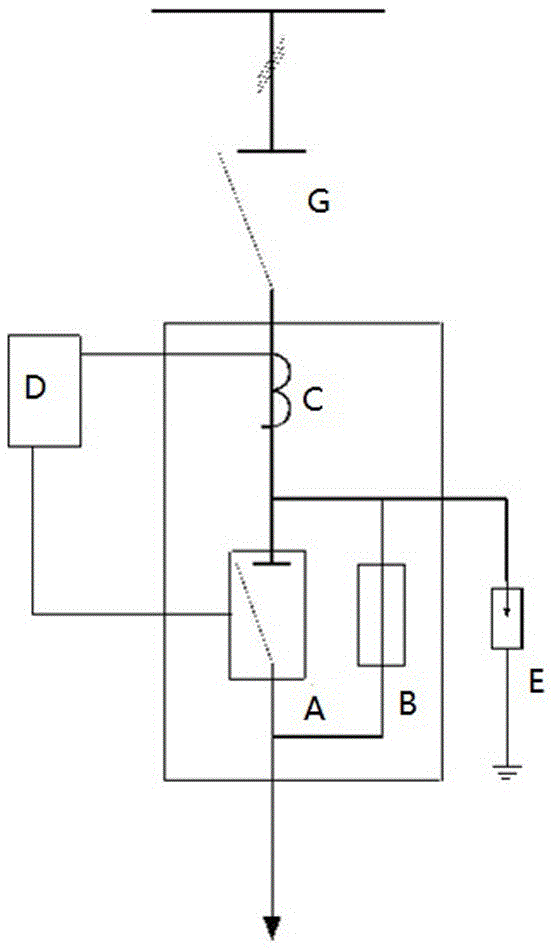High efficiency high speed current limit motion device
A technology of current-limiting actuator and current-limiter, applied in electrical components, emergency protection circuit devices, etc., can solve the problems of increased short-circuit of outgoing line faults, short-circuit faults impacting the power grid, hidden dangers of power safety, etc., to achieve the effect of short action time
- Summary
- Abstract
- Description
- Claims
- Application Information
AI Technical Summary
Problems solved by technology
Method used
Image
Examples
Embodiment Construction
[0007] refer to figure 1 , the present invention is connected in the power grid system, the isolation switch G is closed in use, and the measurement and control unit D passes through a special electronic transformer C, which is an electronic transformer with a high degree of anti-saturation, and can The current signal in the circuit is accurately detected. When the measurement and control unit D detects normal current, almost all of them pass through the fast isolator A with a resistance value of micro-ohm level. Once there is a large-capacity short circuit or a transformer short circuit in the system, the measurement and control unit D collects the current signal detected by the electronic transformer C for analysis and judgment. When a preset start-up value is reached, the measurement and control unit D will send an action signal to the fast isolator A , the fast isolator A will disconnect at high speed within microseconds, and at the same time of disconnection, the fault cu...
PUM
 Login to View More
Login to View More Abstract
Description
Claims
Application Information
 Login to View More
Login to View More - R&D
- Intellectual Property
- Life Sciences
- Materials
- Tech Scout
- Unparalleled Data Quality
- Higher Quality Content
- 60% Fewer Hallucinations
Browse by: Latest US Patents, China's latest patents, Technical Efficacy Thesaurus, Application Domain, Technology Topic, Popular Technical Reports.
© 2025 PatSnap. All rights reserved.Legal|Privacy policy|Modern Slavery Act Transparency Statement|Sitemap|About US| Contact US: help@patsnap.com

